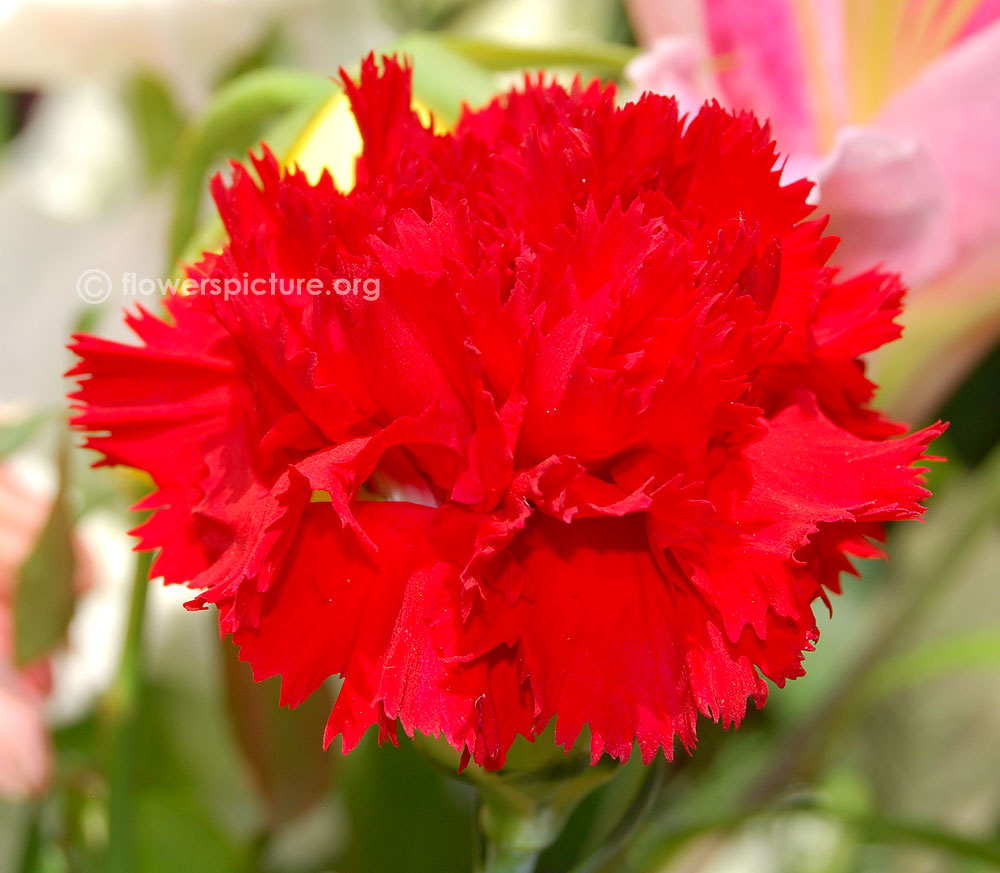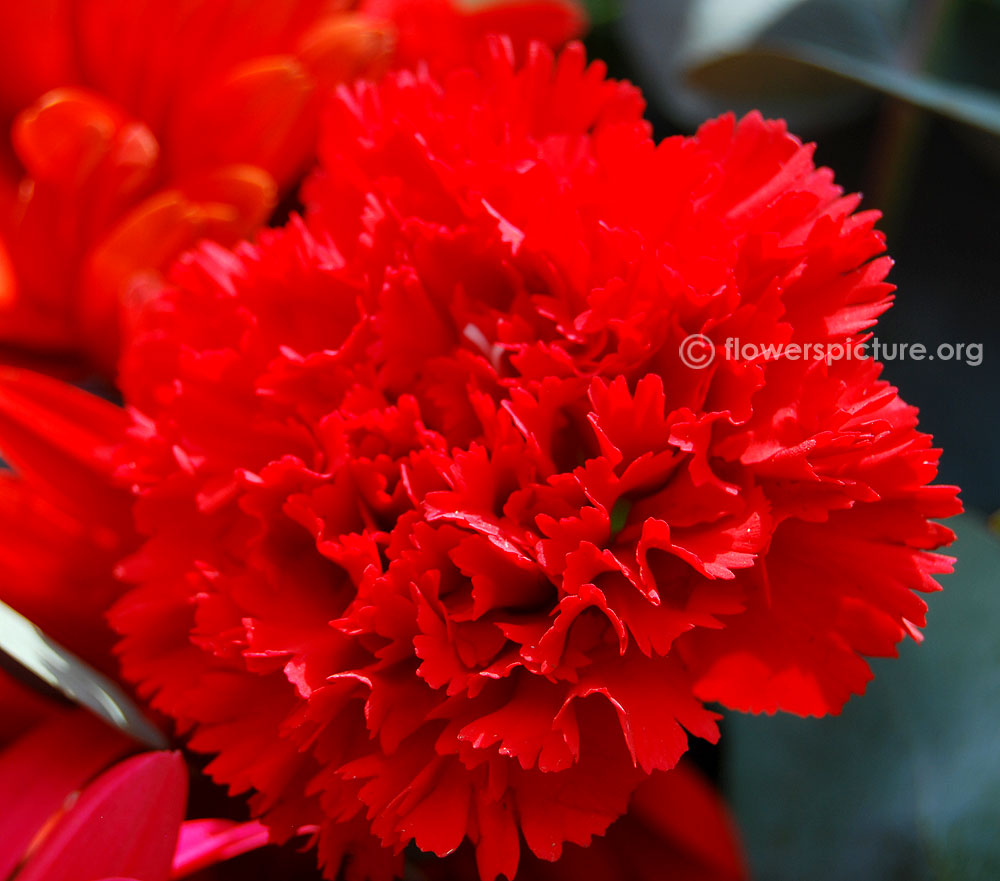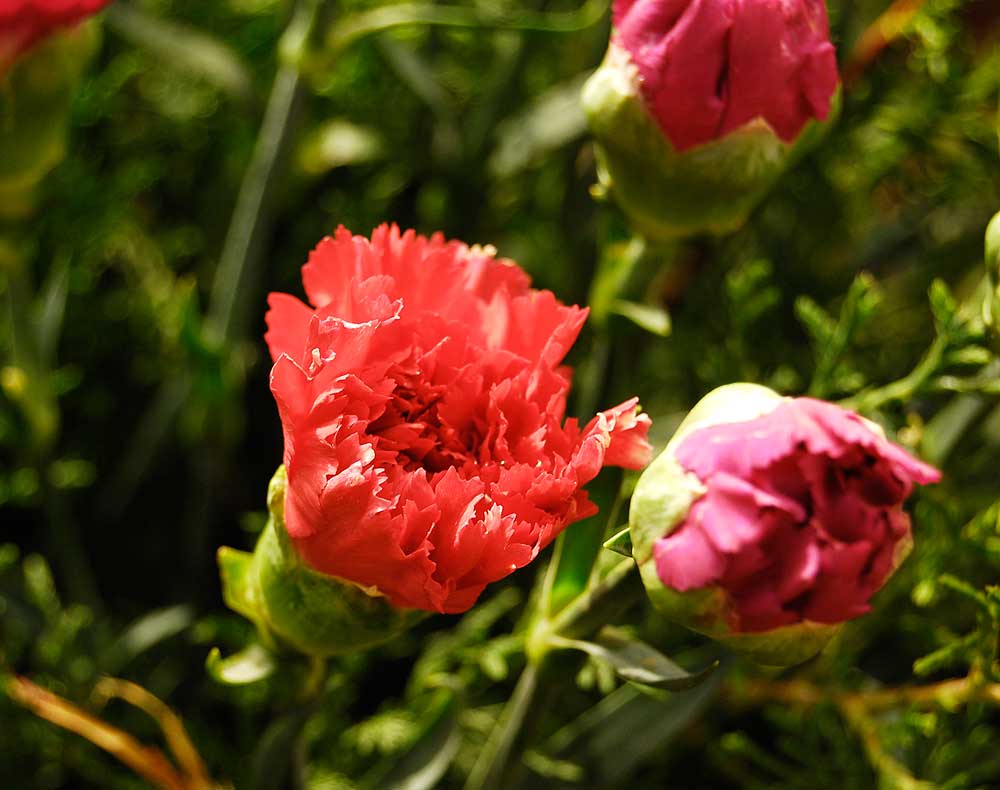- Flowers by Name D >Dianthus Caryophyllus
Dianthus Caryophyllus

Description - A race of perennials and annuals native to southern Europe, northern Africa and North America.
D. caryophyllus is the Carnation, Clove-Pink, Picotee and Grenadine.
The foliage varies in thickness and sometimes is as fine as coarse grass, glaucous green in colour. The flower-stems vary from a foot high in the case of Pinks to three feet for Carnations. The fragrant flowers are borne on the terminals of the stems in small quantities. Carnations are usually grown under glass, except Border Carnations, which may be grown out-of-doors, but these are hardly suitable for herbaceous borders.
The Pinks comprise such groups as the allwoodii, herbertii and winteri.
Varieties of the laced type, also “Mrs.sinkins” and “Inchmery” are old favorites. D.sinensis is the Indian or Chinese pink with a wide range of colour.
D. barbatus is the popular Sweet William which flowers in clustered heads.
Propagation is by cuttings, layering and seed.
The flowering season extends throughout the summer
Kingdom - Plantae
Genus - Asclepias
Origin / Native - Europe, Asia, Africa, Mediterranea
Category&Life Cycle - Annual, Perennial herb
Height - 12 inches to 2 feet tall
Flowers - Large, showy, fragrant, red
Flowering colors - Red, yellow
Foliage - Greyish green
National flower of - Spain
Light requirement & care - Sunny, open, good, free draining soil
ProPagation - From seeds
Cultivation - Spring- Plant immature stock from pots, Late summer-Remove old flower heads & trim lacking in restraint[unmanageable, unruly] plants
Pests & Diseases - Aphids cause problems, Rust, Anther smut may occur
Suitable for - Borders, pots, containers, rock gardens, cut flowers
Dianthus caryophyllus red full bloom

Dianthus caryophyllus flower bud

Flowers & Plants by Categories



































